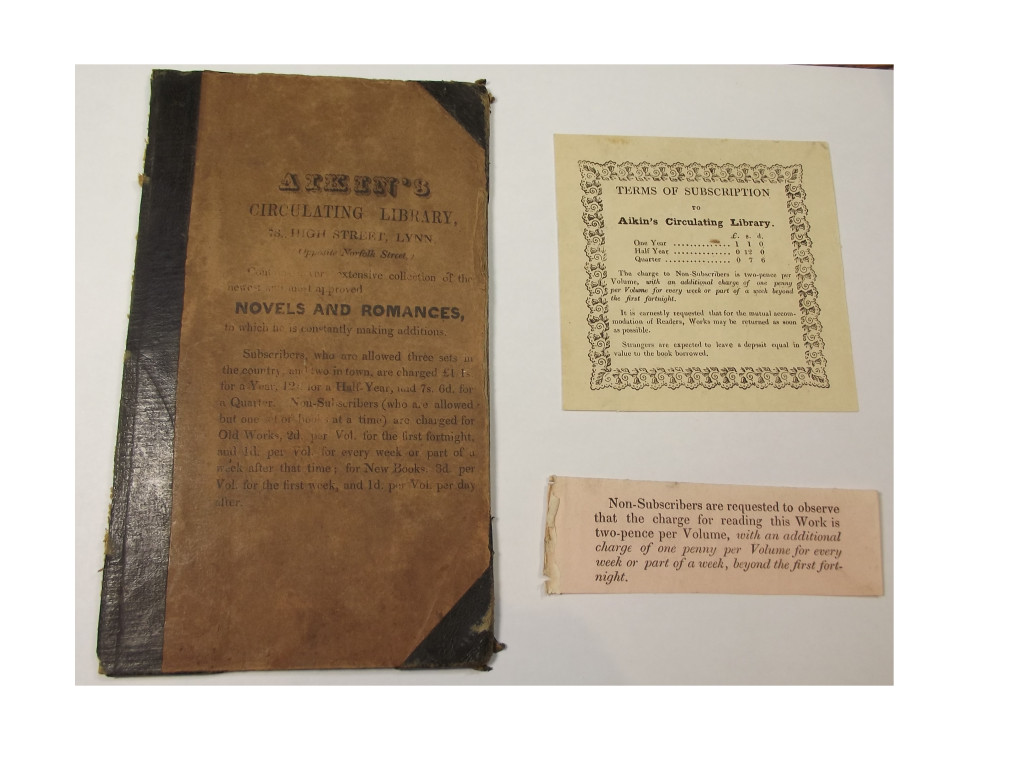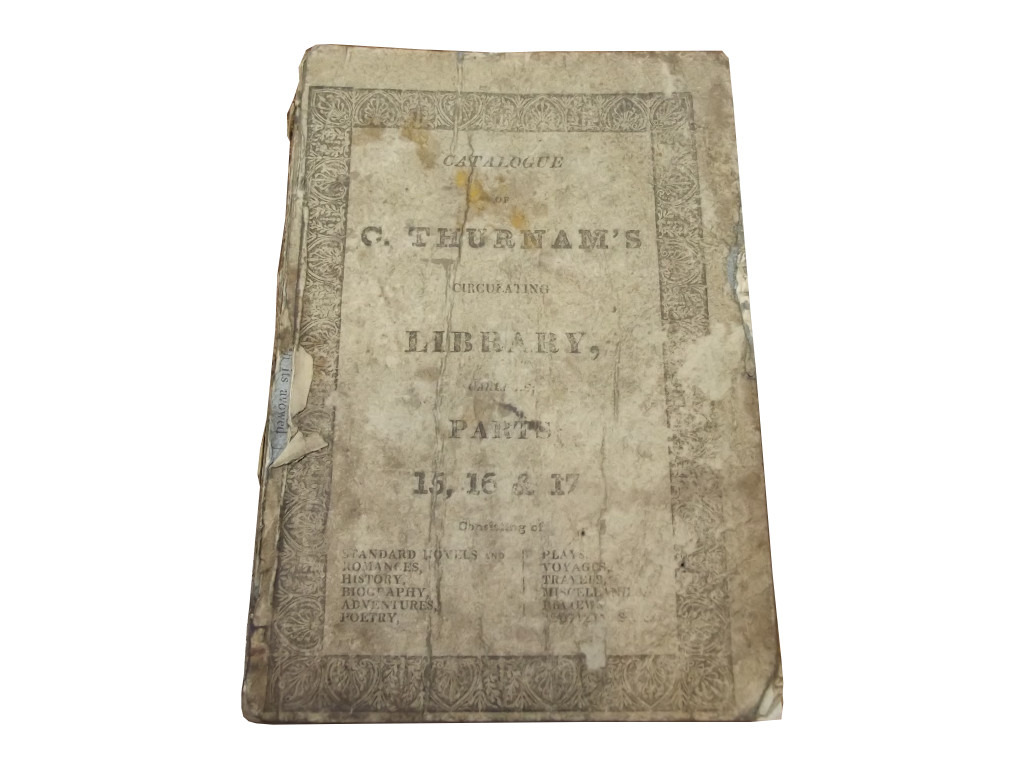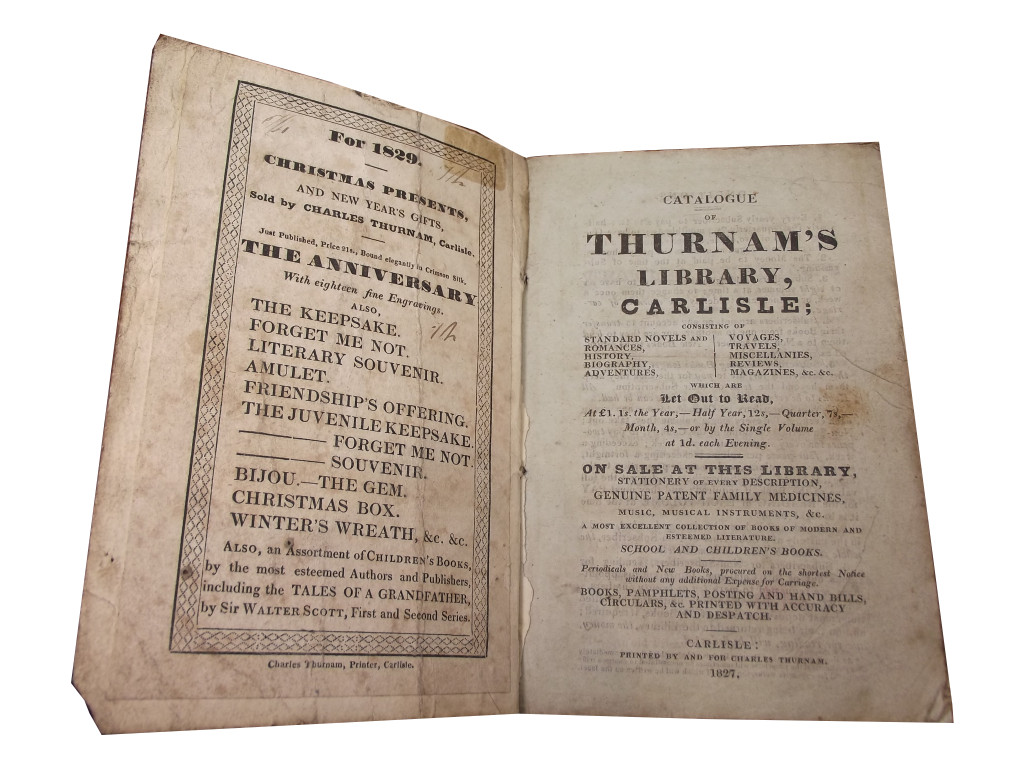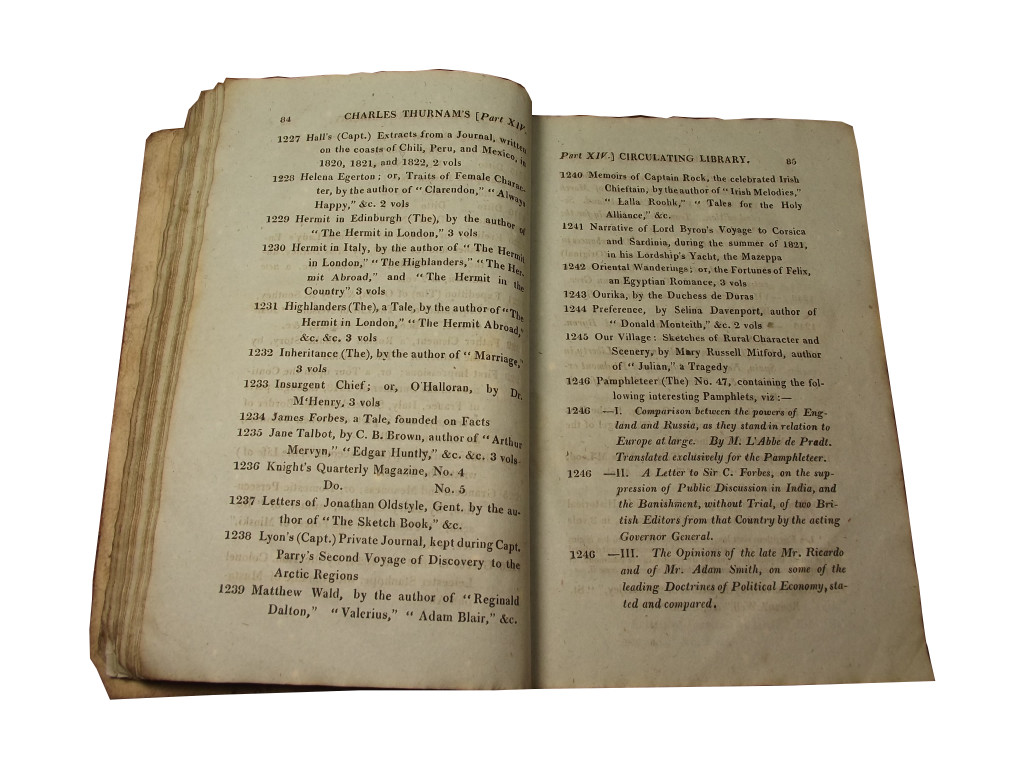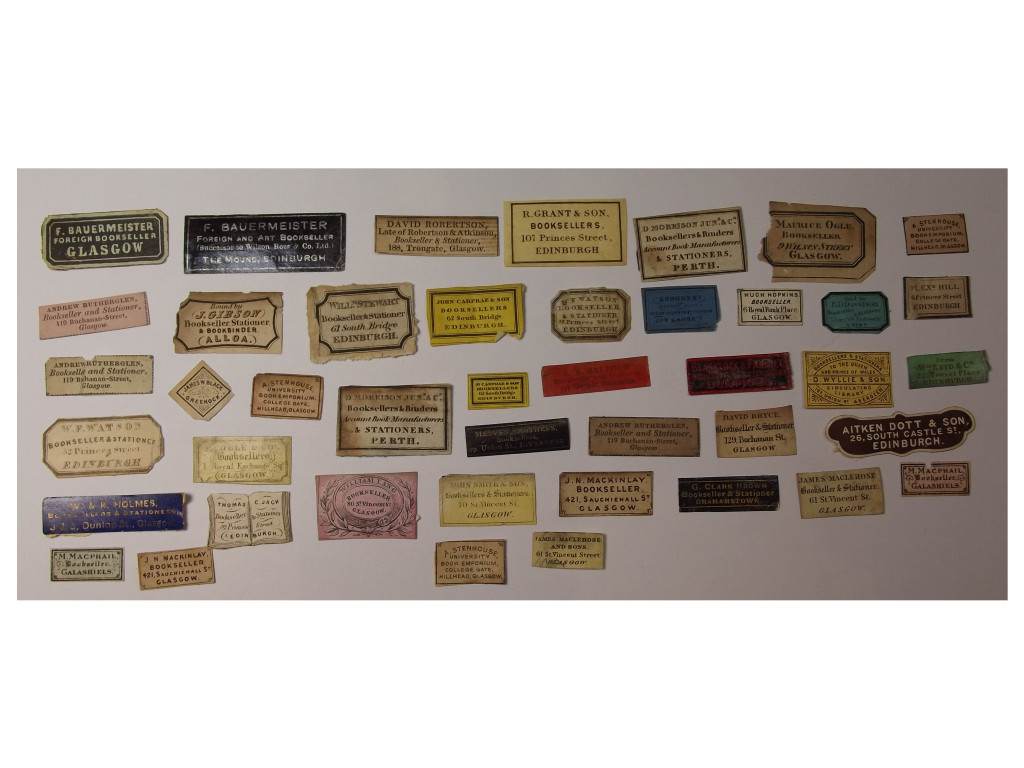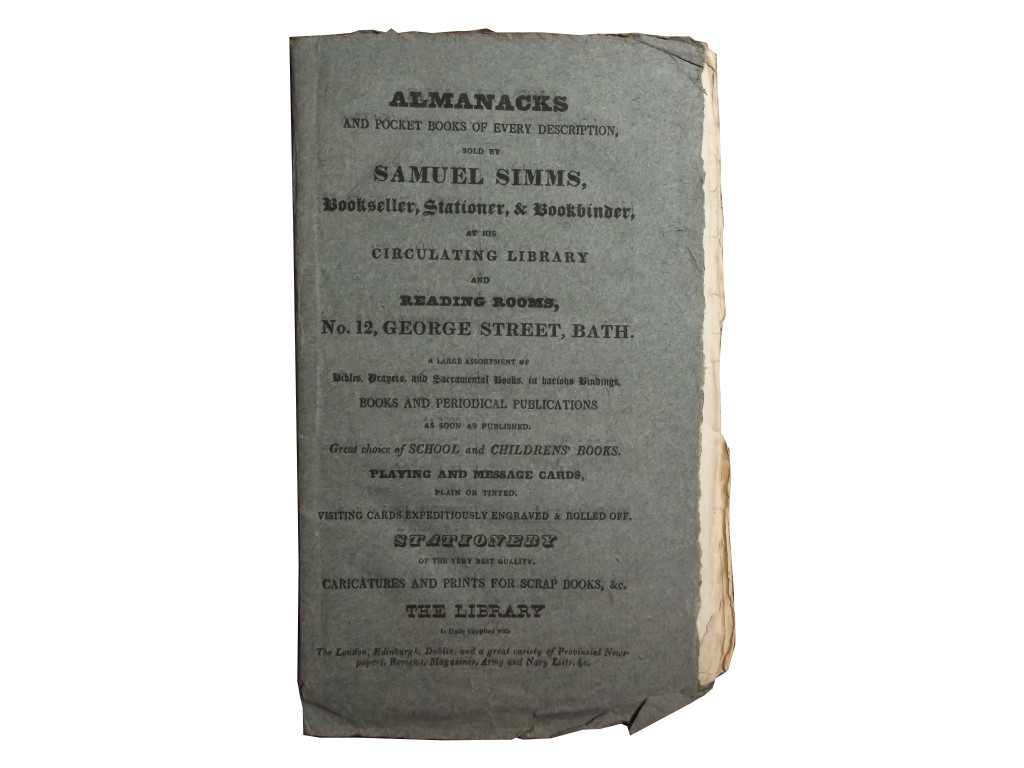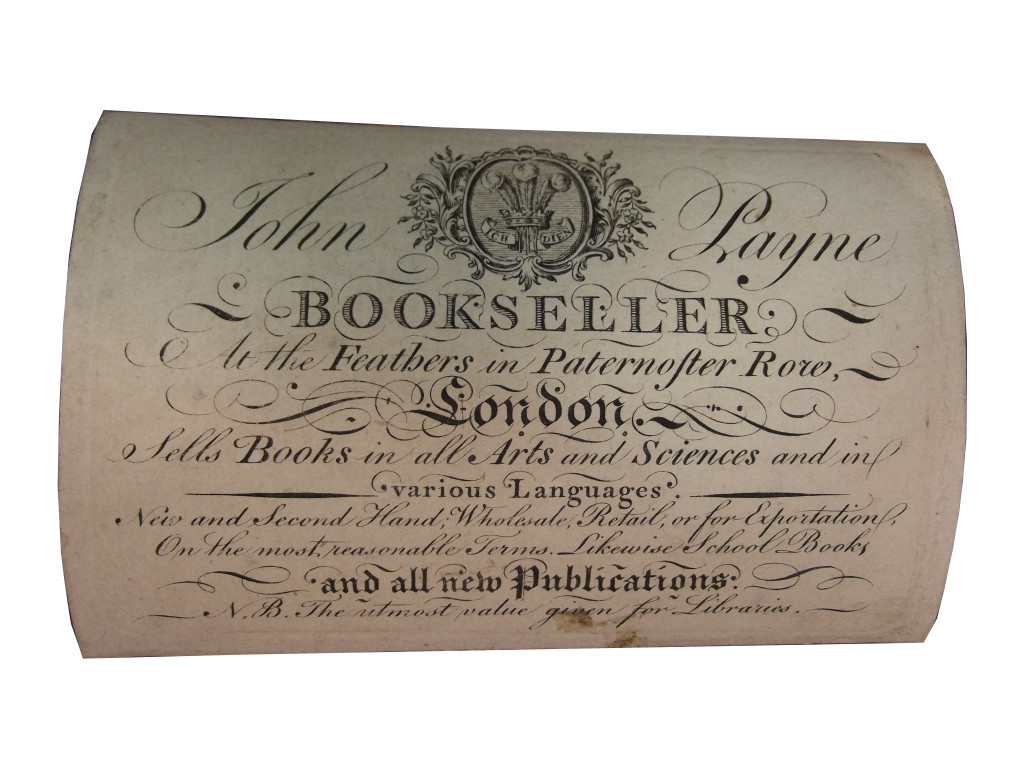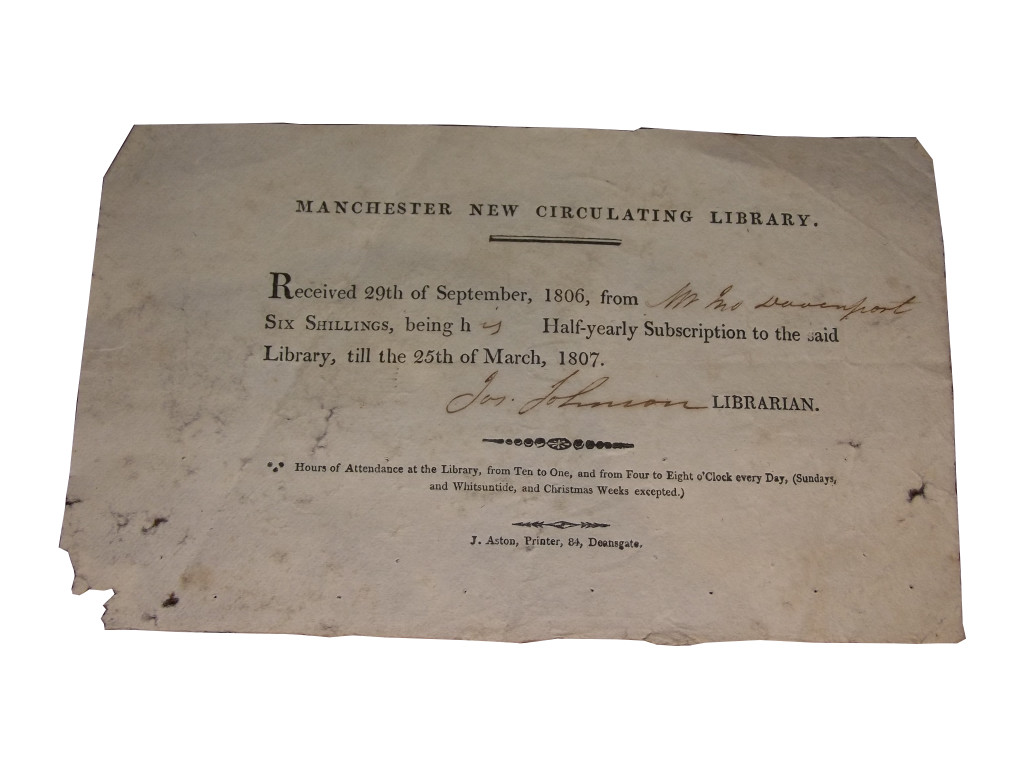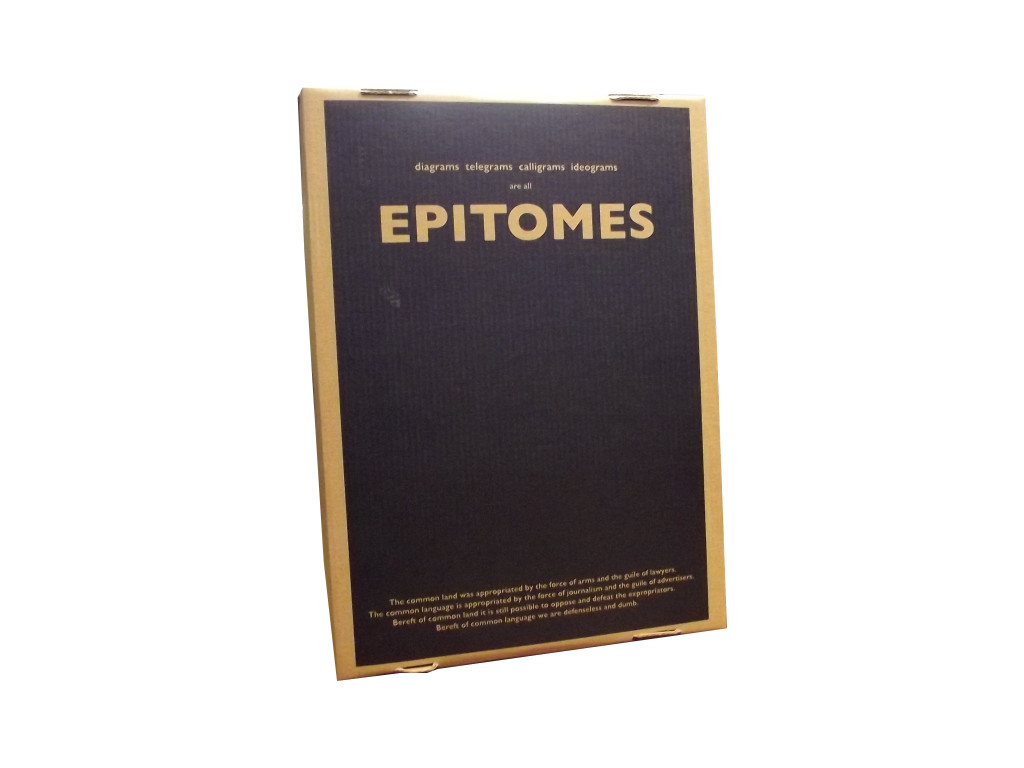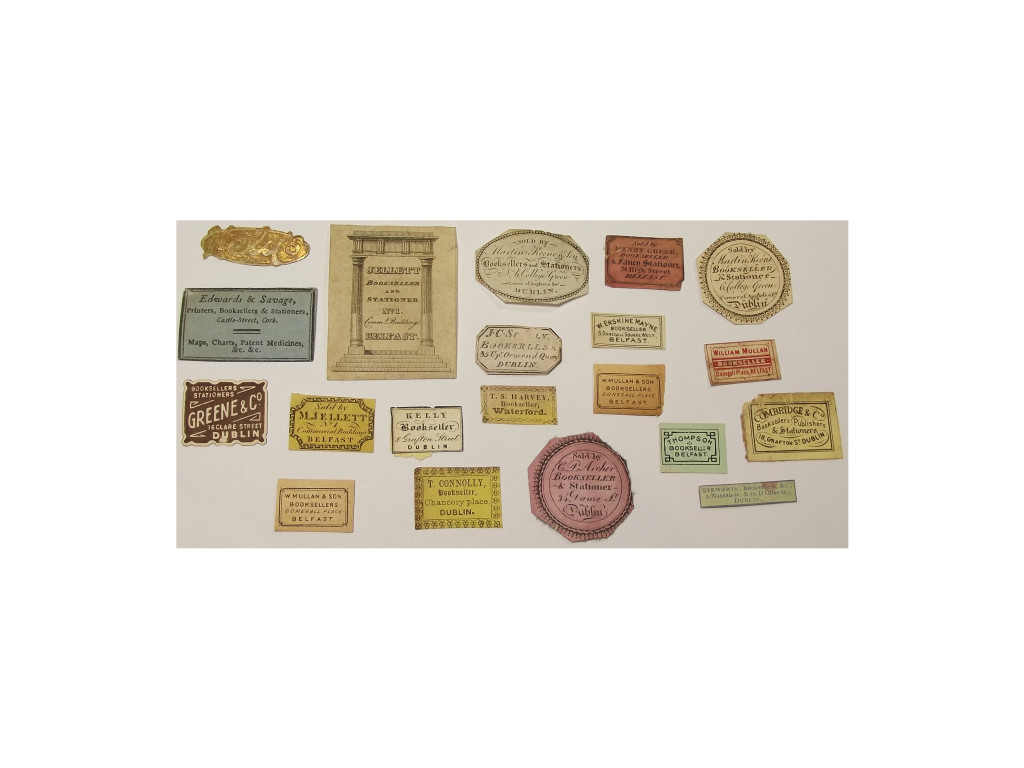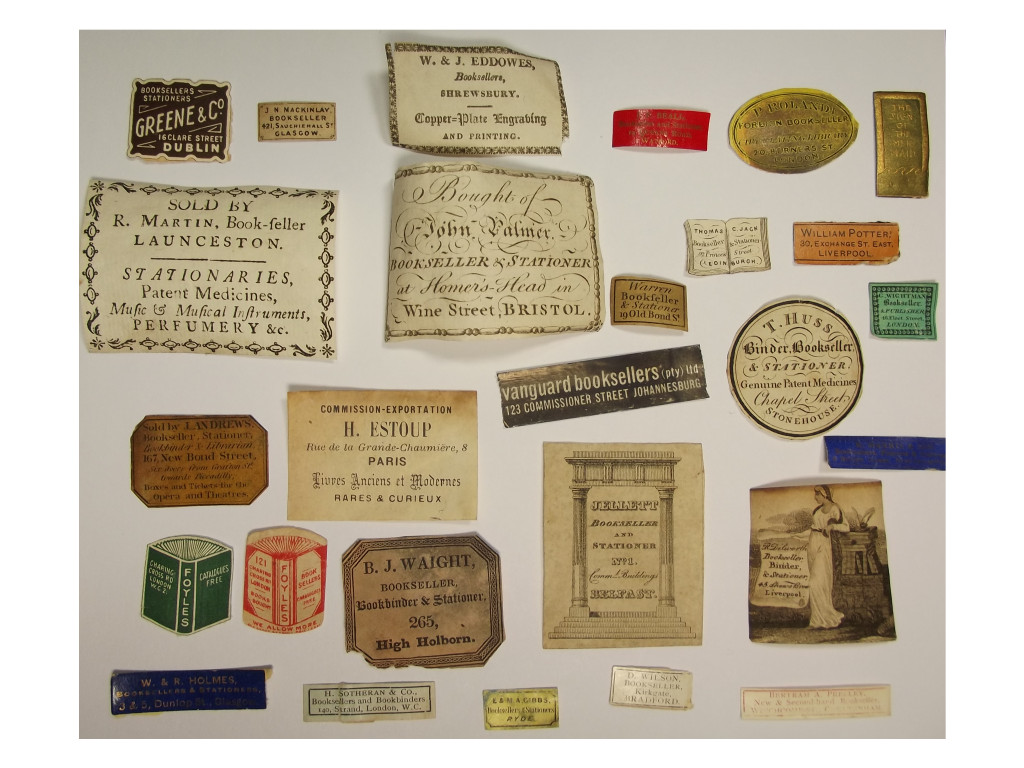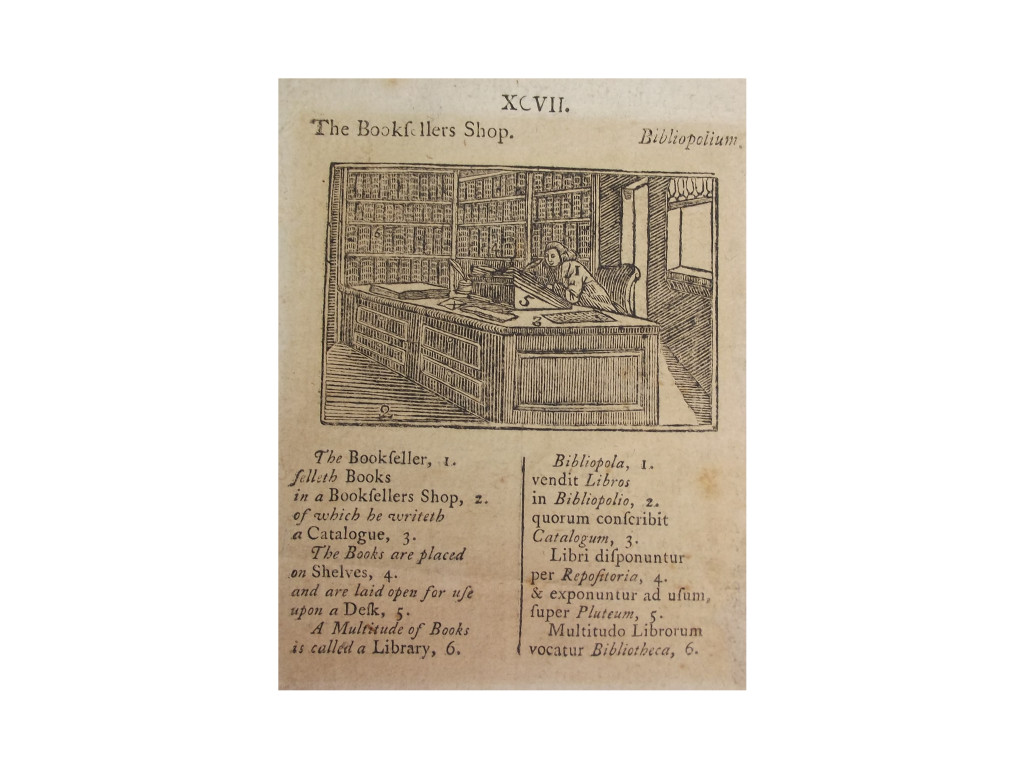As well as bookseller labels, I am also very keen on circulating library labels and yes, I know I should get out more. These are obviously best left in (and on) the books involved as they are a good source of provenance, but often they arrive here already removed.
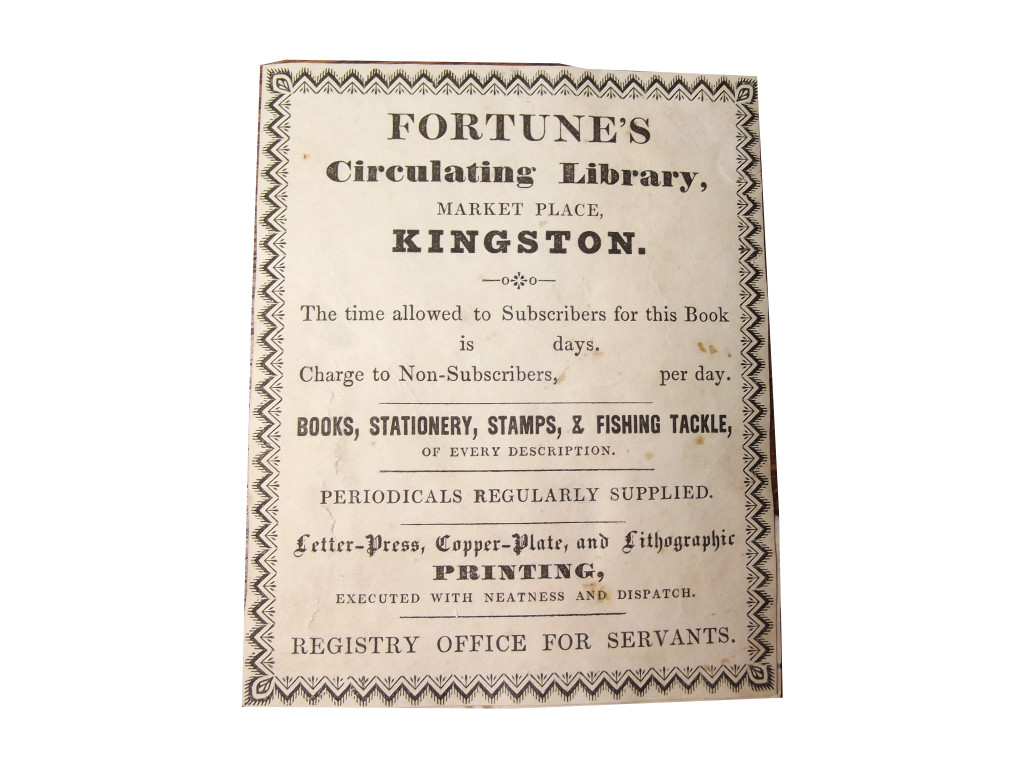
Circulating libraries lent books, pamphlets, newspapers etc to customers for a fee and prospered largely between the mid-eighteenth and mid-nineteenth century. They often offered other book-related trades and products like printing, bookbinding and book selling, but also slightly more unusual things like medicine, perfumes and umbrellas (see below).
Probably the nicest example I have is stuck onto the outside of the covers, and the only one I have seen which has a ‘front’ and a ‘back’, though it is unlikely to have been intended as such.
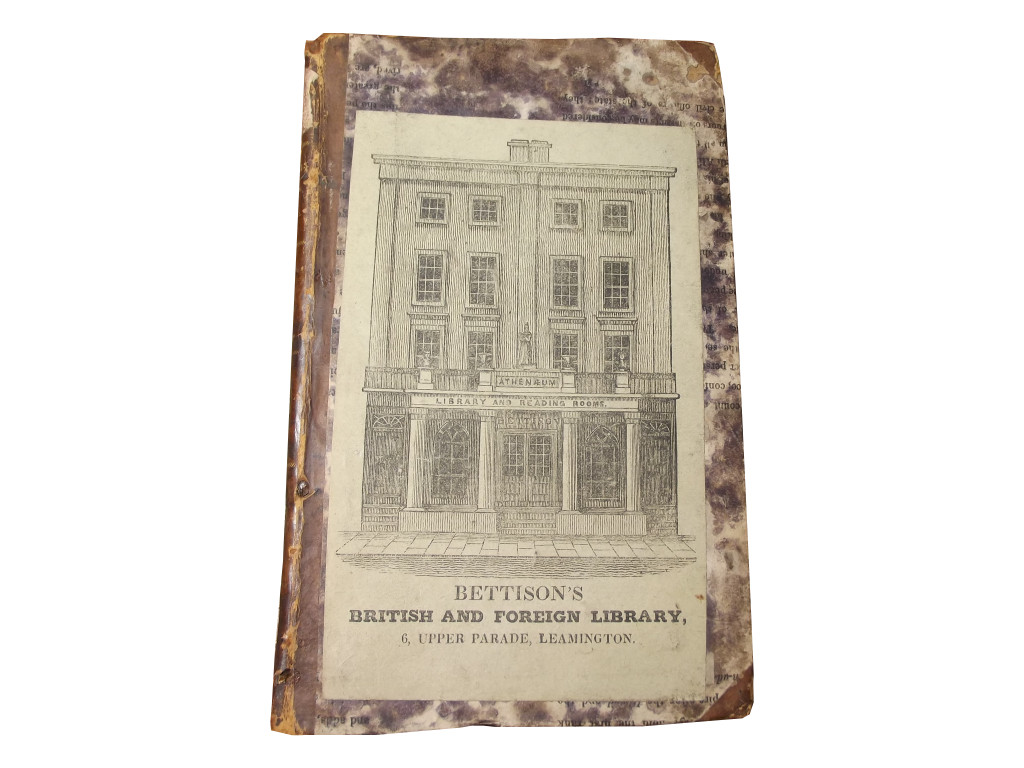
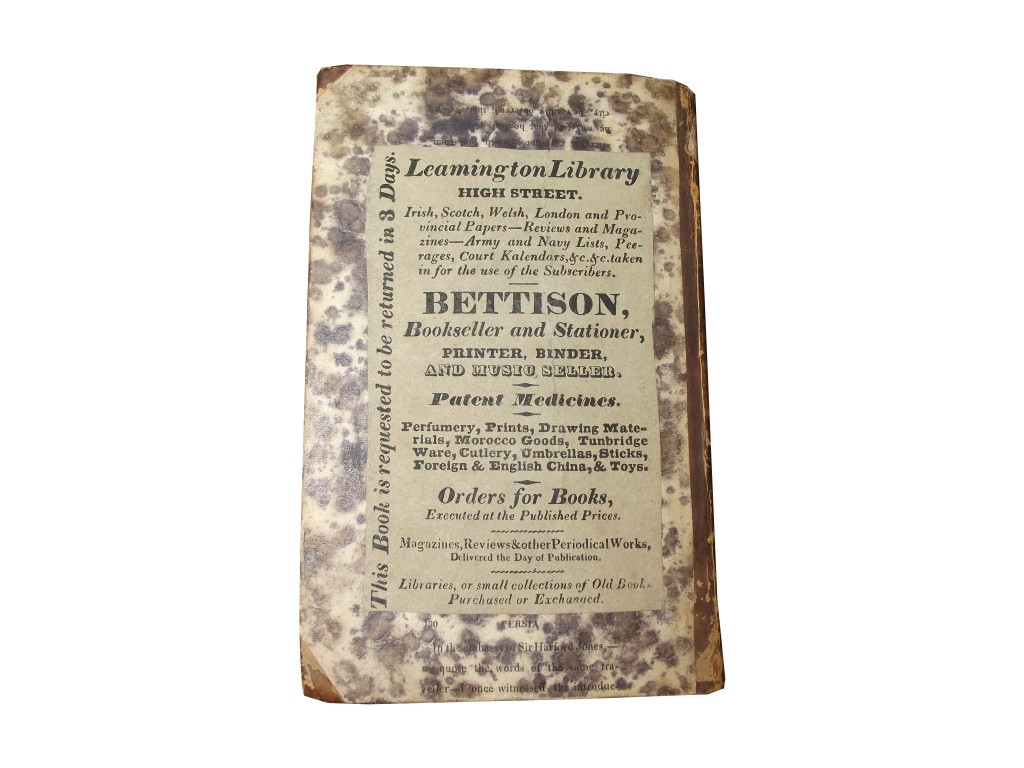
The ‘front’ of the above example from Bettison’s of Leamington does appear in the Papantonio Collection which forms the basis of the excellent book by Charlotte A. Stewart-Murphy, “A History of British Circulating Libraries”, published by the Bird & Bull Press in 1992 (see Plate VI), but the ‘back’ does not.
The Stewart-Murphy book mentioned above is probably the best introduction to circulating libraries and their labels, Scottish circulating libraries are brilliantly served by Keith Manley’s, “Books, Borrowers and Shareholders”, though, alas, no illustrations are provided of the actual labels
